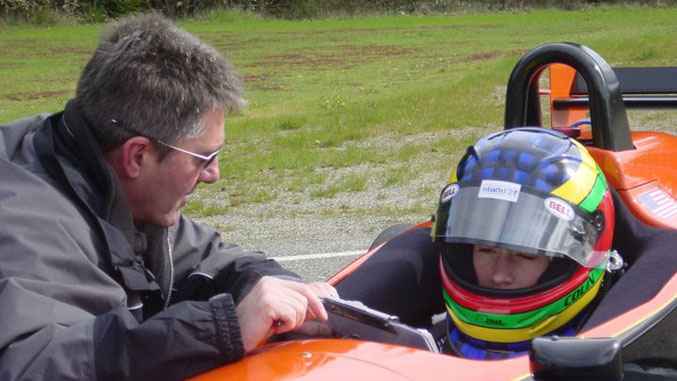Not long ago I was coaching a driver whose heart rate was being monitored and sent back to the pits via telemetry. Over time, we could almost predict his lap times based on his heart rate. Just like the three little bears, if his heart rate was too low, his lap times were slow; too high and his lap times slowed. Just right and he was fast.
I’ve used heart rate monitoring in the past while coaching drivers. I even wore a monitor way back in 1994 while competing in the Toronto Indy Car race. Each time, I’ve learned more and more about the benefits of heart rate monitoring as a tool to improve a driver’s performance. Another driver I coached is competing in the VLN series at the Nurburgring, and he connected with this week’s guest contributor, Chris Blomfield-Brown of Wireless Motorsport. –Ross
|
Heart rate can tell a lot about your driving – a lot more than most teams and drivers are aware of.
The heart muscle is used to pump blood around our bodies to deliver oxygen and nutrients. When we exert effort (run, lift heavy things) our bodies respond by increasing heart rate to supply the oxygen required by the muscles. A general rule for a maximum heart rate = 206.9-(0.67*Age) with a standard deviation of +-7bpm.
This rule is general, however; if someone is very unfit they may have difficulties achieving a higher heart rate and biologically some people naturally may have a higher or lower heart rate. Most sports trainers can help determine maximum heart rate and training heart rate zones.
Heart rates are often classified in zones – the following is just one example of heart rate zones:
|
|
|
Every type of vehicle requires a certain level of effort to drive. A high G-force car with wings and without any power steering assistance can be pretty physical; so can motocross and rally. Other cars may take a little less effort with power-assisted brakes, steering, etc. In any case, the effort to drive a race car is significantly higher than operating a road car, and much higher than most drivers and teams appreciate.
While driving, most drivers should be in Zones 2 & 3 (Weight control to Aerobic levels). However, if they are operating in Anaerobic or VO2 Max, these levels are unsustainable and will quickly lead to fatigue and driver error, and thus should be avoided.
Establishing a baseline heart rate is the first step. This is best done on a test day at a familiar circuit with low stress levels. These tend to be lower stress days and show a better indication of what effort is being used to pilot the vehicle.
We can use this baseline heart rate on race weekends. It is very common to see elevated heart rates on race weekends as many drivers put pressure on themselves to perform. We often refer to this observation as ‘stress’ – which is the elevated heart rate above the baseline rate.
Research shows that ‘a little stress’ is a good thing. This is when we, as humans, become very aware of our situation. This may be a slight heart rate increase, but still operating in Zones 3 and 4.
Research also shows that ‘too much stress’ is a bad thing, which is typically seen by operating in Zones 1 or 2 (VO2 Max or Anaerobic). We also call this ‘reactive mode’ where the driver is reacting versus piloting and may not be making the best decisions. When a driver is operating in reactive mode, we often see them driving fast but not consistently, and occasionally they make large mistakes, costing time.
So on a race weekend, you will tend to see a slightly higher heart rate. From our observations, this seems to be okay. When we see much higher rates, we have been able to map an increase of driver errors. Lowering a driver’s stress level can yield a better performance, and we have witnessed this in many cases.
Motorsport places high demand on the body – much higher than most drivers and teams understand. We have had several drivers take the challenge of repeating their race level heart rates in the gym. Many cannot complete the test and find it hard to believe that their heart rate was that high for that long. Others who can complete the test find it very challenging. If drivers can prepare their bodies to handle more than what is required on a race weekend, then fatigue should have less of an impact on their performance.
In all cases, the first step is to accurately measure and understand the stress and external factors on a driver. Putting the driver’s biometric data into the telemetry data helps develop a clearer picture and is the first step in optimizing your driver.
Chris Blomfield-Brown




















